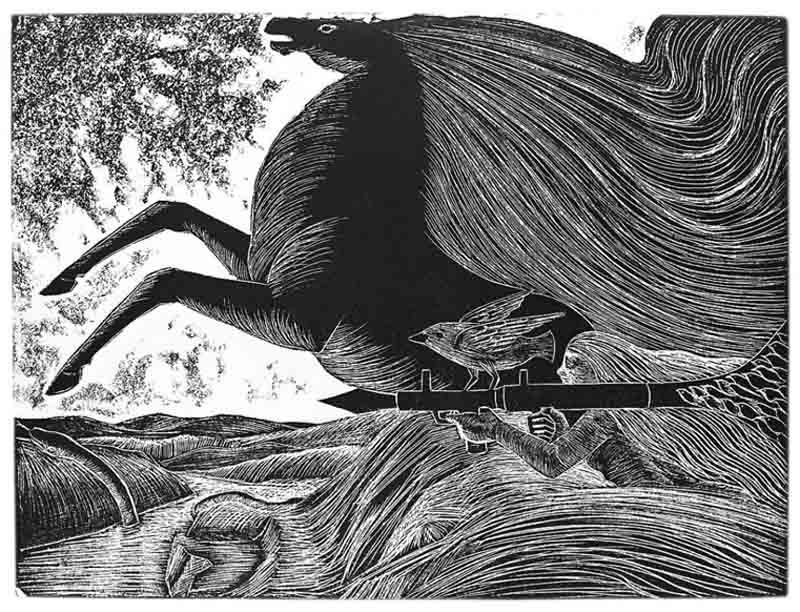Subject and symbolism
The subject matter of the Liberation artists was the revolution. They were proud to possess a cause and focused their attention thereon. Content was communicated through symbolic images combined formally in ways that Cubism and the Mexican Muralist movement established. Often the symbolic images were connected simply by being in the same space or seemingly collaged together. First and foremost in the minds of artists was the importance of connecting to the population with symbols known to them. Their paintings provide a visual lexicon of these symbols often unclear to the outsider. The foremost symbol represented the liberation struggle. Nostalgic memories of the horse in battle, and an admiration of its power in motion, earned it the status of the symbol of revolutionary motion. Moreover, the majesty of the Arabian horse symbolizes the dignity of revolutionary fighters. The horse first appeared in the work of Mustafa al-Hallaj after the 1968 victory at Al Karameh. The print “Battle of al-Karameh” (1969) shows a fighter–a woman on the ground with a heavy weapon--with a monumental horse thrusting through the sky. The long mane of the horse meanders in rhythm with the landscape below. To symbolize that the intention of struggle is to attain peace, the artist placed a dove, also thrusting forward, on the barrel of the gun, ready to take flight. Another work dating from 1990 using the horse as a symbol demonstrates his understanding of class struggle. He described the horse riders as revolutionaries and the rows of little people pulling the long strings that are attached to the shoulders of these towering figures as those who wish to stop the revolution.
Source:
https://www.jadaliyya.com/Details/28691/Mustafa-al-Hallaj-Master-of-the-...

